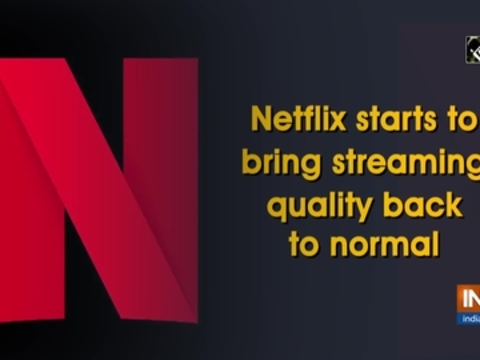Targeting new sections
Chandramohan identified markets that prominent brands had ignored as too small or not worth investing in. He started supplying ice cream to college students (who wouldn’t be averse to trying new brands); and he kept the product quality high and the supply steady.The response was good. Similarly, he identified another market, ship chandlers, studied their packaging and delivery requirements and captured that market as well. Reportedly, by 1974, almost 95 per cent of the college canteen and ship-chandler markets used only Arun Ice Creams.
Another marketing strategy employed by Chandramohan was introducing the brand in rural areas. Positioning his brand as ‘Fresh ice cream from Madras’, he captured the imagination of the rural public.By then, Arun breached the Chennai became popular only in the late 1980s.
The founder was soon supplying ice creams packed in dry ice containers to educational institutions (canteens and hostels) at the district level. Wherever possible, he used Indian Railways to transport his products. Chandramohan was not yet ready to enter Madras and concentrated on Tier 2 and Tier 3 towns like Pondicherry , Madurai, Sivakasi, Kumbakonam and neary by districts.
Marketing marvel
Around this time, Chandramohan felt the need to supplement his native shrewdness with new skills and studied marketing and personnel management.
Apart from supplying ice cream to social events like marriages, , Chandramohan also announced through hoardings that ice cream could be booked with Arun agents and picked up on specific, fixed dates. The response to this was tremendous.
Arun is supposed to be the first ice cream brand in India to introduce the concept of an exclusive ice cream parlour. It was a Wonderful discovery. Financial constraints made it impossible for Chandramohan to supply deep freezer units to retail shops that were willing to stock his brand. In 1981, one enterprising person who had noticed the public response to the ‘fixed-day’ campaign suggested that he would open an outlet dedicated to the brand and invest in his own freezer unit in return for long-term distribution arrangements. And thus, the concept of a ‘parlour’ where people could come in, sit down, and just eat ice creams was born.
This franchise model soon expanded, first within Tamil Nadu and then to other southern states. Loyalty among the franchisees was so high that some are said to have named their children ‘Arun’. In 1985, Arun topped the ‘Ice cream sales by volume’ list in Tamil Nadu. By 1999, it is said to have opened about 700 outlets in TN, Karnataka, Kerala and Andhra Pradesh.
By the 1990s, turnover had crossed ₹3 crore. The 1990s also saw Hindustan Unilever taking over several regional ice cream brands; Arun Ice Creams refused to buckle under pressure and held its ground. As the market expanded, in 1995, Chandramohan introduced refrigerated vehicles to transport ice cream to its outlets, both within and outside Tamil Nadu. A new depot came up near Madurai for storage and quick delivery.
Expanding the business
But before this, in 1986, Chandramohan had ventured into the dairy business. For ice cream manufacture, the regular supply of quality milk is an essential prerequisite. By directly procuring milk from dairy farmers, Chandramohan created a home-grown supply segment for his ice cream business. The company was named Hatsun Foods Pvt. Ltd. (It later became Hatsun Milk Food Ltd. and in 1998, Hatsun Agro Product Ltd.) The ownership of the brand name ‘Arun’ was transferred to this company.
In the early 2000s, as Chandramohan’s focus shifted to the dairy business, ice cream sales fell. It was only in 2007 that a revival was seen. That year, Hatsun introduced a new parlour format called ‘Arun Ice Cream Unlimited’ offering scoops of ice cream. These parlours were also used to sell its other products and became premium Ibaco parlours when the high-end brand was introduced in 2012.
Hatsun stores now play a dual role: they are distribution points early in the morning and retail stores for the rest of the day, showcasing all the products from Arun in clear-top refrigerators. Franchisees have reported a 50 per cent jump in sales of Arun Ice Creams due to this change.
Today, Hatsun is the largest private sector dairy company in India, with a network of about 10,500 Hatsun ‘Milk Banks’ across 12,000 villages: more than three lakh farmers supply milk to these units. Its 14 plants are spread across four states in South India. It procures about 18-20 lakh litres of milk per day.
Of this, 60,000 litres go for ice cream production and the remaining for milk, milk products, ghee, curd, and other such products.
Ice cream sales reportedly account for only about 10 per cent of the ₹4,200 crore company; but mention the name ‘Arun’ to anyone and the association with ice creams is immediate — such is its brand recall!
Keeping up with the times
Chandramohan invested in the best technology to keep his ice cream brand ahead of the rest. Apart from cone and chocolate manufacturing equipment, Arun has a well-equipped packaging and production line, and a cold storage facility that can hold up to 10 days’ ice cream inventory. Expert ice cream technologists and management personnel were appointed to keep the quality consistent and innovation levels high.
Arun Ice Creams became famous for the variety of flavours it offers, which included flavours based on traditional Indian sweets, and the new flavours introduced every season. Its ‘Cassatta slice’ ice cream is still a firm favourite among regulars. Bars, cups, ‘ibars’, ‘ibar minis’, icons, specialities, tubs, kids’ bar like Yummy Bear, Spiral, Trio, Jolly Train. Because of control over milk procurement, Arun has been able to consistently maintain its ‘creamier’ USP in ice creams, with 12 per cent fat content (minimum fat content in ice creams is 10 per cent).
With over over 2,300 parlours across Tamil Nadu, Karnataka and Andhra Pradesh, Arun recently entered Maharashtra and Orissa. It is also present in foreign markets such as Seychelles (where it holds 70 per cent of the market ) and Brunei (where it is among the top 5 brands). Clearly, the sun, as in its brand name, keeps shining on Arun.












